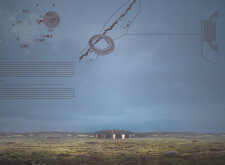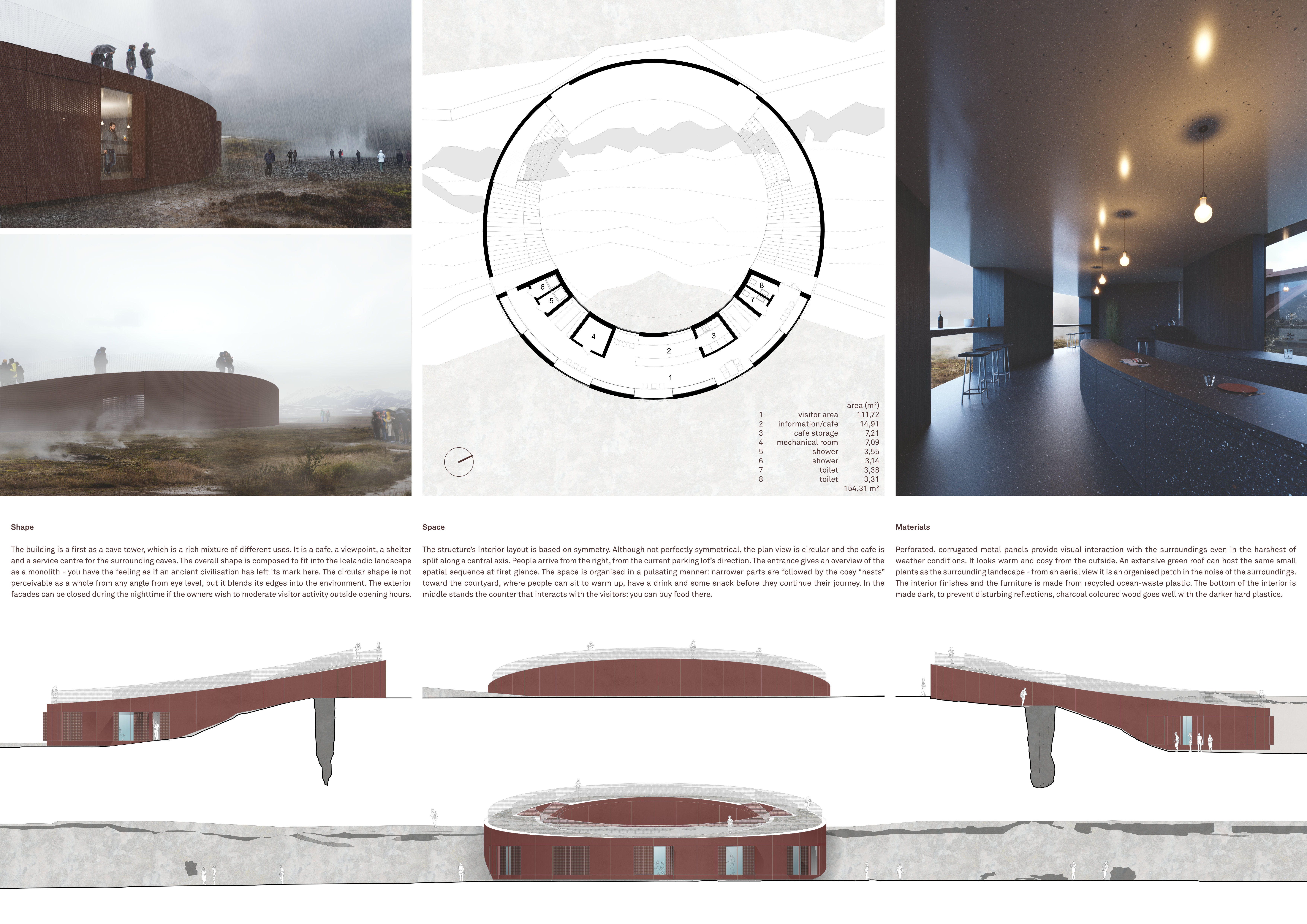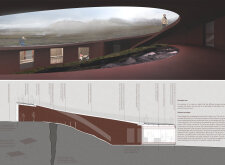5 key facts about this project
The project represents a modern approach to architecture that prioritizes sustainability and community engagement. The circular form of the building serves multiple purposes, allowing for unobstructed views and facilitating interaction among visitors. This multifunctionality is key, transforming the structure into a destination that accommodates relaxation, learning, and socialization.
Material Selection and Sustainability
The architectural design showcases a deliberate choice of materials that align with sustainable principles. The exterior is clad in perforated corrugated metal panels, which offer resilience against the region's harsh weather conditions while providing visual ties to the natural environment. The use of recycled ocean-bound plastics for interior furnishings highlights an emphasis on sustainable practices. Additionally, charcoal-colored wood integrates warmth into communal spaces while minimizing glare.
Incorporating renewable energy sources for heating and electricity further underscores the project’s commitment to sustainability. The building is designed to manage moisture and temperature variations effectively, ensuring longevity in a challenging climate.
Innovative Structural Elements
The architectural design employs a circular form that allows visitors to navigate easily through various functions, including a café, information center, and relaxation areas. The layout promotes visitor movement and engagement within the space.
A notable feature is the walkable roof, providing an elevated perspective of the surrounding landscape while encouraging outdoor interaction. This integration of outdoor and indoor environments represents a unique approach to visitor facilities, enhancing the overall user experience.
The structural foundation comprises ground screws, providing adaptability to site conditions and ensuring stability. The design elevates the building to address potential water risks related to local geological characteristics, demonstrating a thoughtful response to environmental challenges.
This project near Lake Myvatn not only serves its intended functions but also exemplifies architectural approaches that prioritize sustainability and engagement. For those interested in a more in-depth understanding of the project, exploring architectural plans, architectural sections, and architectural designs will provide further insights into this unique endeavor.


























